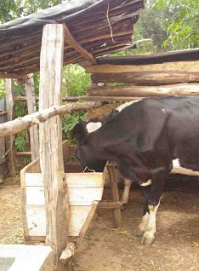Case-study /
Climate-smart agriculture put into practice in smallholder dairy development project in Kenya


EADD project in Kaptumo
The East Africa Dairy Development Project (EADD) is a regional industry development program implemented by Heifer International and a consortium of partners including TechnoServe, International Livestock Research Institute (ILRI), The World Agroforestry Center (ICRAF) and African Breeding Services (ABS TCM). The project is funded by the Bill & Melinda Gates Foundation as part of an agricultural development grant designed to boost the yields and incomes of millions of small farmers in Africa and other parts of the developing world so they can lift themselves and their families out of hunger and poverty. The EADD Project is implemented in Kenya, Rwanda and Uganda. In Kenya 21 farmer organizations have been established since 2008 and work through a ‘ hubs’ model. These hubs provide services such as chilling plants, storage, agro-veterinary services, and artificial insemination services among other services.
MICCA has partnered with EADD in Kaptumo in Nandi South District in the Rift Valley Region, where a chilling facility is located in Ndurio (5,000 l tank) and in Kaptumo (10,000 l tank). The hubs are managed by the Dairy Farmer Business Associations (DFBA), who are shareholders.
Putting climate-smart agriculture into action in EADD project
The MICCA pilot projects aim at contributing towards the adaptation to and mitigation of climate change, whilst at the same time supporting an increase in productivity in smallholder farming practices. The projects will provide quantifiable evidence how climate-smart agricultural practices can mitigate climate change, improve farmers’ lives and make local communities better able to adapt to climate change. Therefore, two main activities are pursued between the different partners in the pilot projects:
- To work with farmers to identify climate-smart agricultural practices and integrate these into smallholders’ farm management, and;
- To quantify the impact the climate-smart agricultural practices have on climate change mitigation and on farmers’ net welfare and well-being, as well as on land health.
